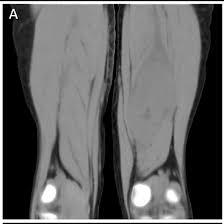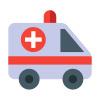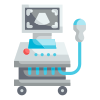Fill out form to enquire now
CT For Bilateral Thigh And Leg
Medintu has collaborated with the best pathology laboratories that are NABL and NABH certified and follow ISO safety guidelines to provide the best CT For Bilateral Thigh And Leg at an affordable price for needy individuals. A CT scan (Computed Tomography) of the bilateral thigh and leg is an advanced imaging procedure that uses X-rays and computer technology to create detailed cross-sectional images of both legs, from the hips down to the ankles. This non-invasive diagnostic tool is highly effective for evaluating a range of conditions affecting the bones, muscles, ligaments, tendons, and blood vessels in both legs simultaneously. Whether you’re dealing with a traumatic injury, musculoskeletal pain, or a vascular issue, a CT scan can provide essential insights that help doctors make accurate diagnoses. It is particularly valuable when conditions affect both sides of the body, such as bilateral fractures, soft tissue injuries, or systemic infections.
To schedule an appointment for a CT For Bilateral Thigh And Leg, simply contact Medintu or call our customer care at +919100907036 or +919100907622 for more details and queries.
What is a CT Scan?
A CT scan (Computed Tomography) is a sophisticated medical imaging technique that uses X-rays and advanced computer processing to create detailed, cross-sectional images of the body. These images are often referred to as “slices,” and when combined, they produce a comprehensive, three-dimensional view of the internal structures of the body. Unlike regular X-rays, which provide a single image of a body part, a CT scan captures multiple X-ray images from different angles. A computer then processes these images to generate highly detailed cross-sectional slices of the body. These slices allow healthcare providers to examine internal structures like bones, organs, blood vessels, and soft tissues in much greater detail. CT scans provide far more detailed images than traditional X-rays, allowing doctors to see bone fractures, soft tissue injuries, tumors, infections, and other abnormalities. The ability to create images in thin slices (usually millimeters in thickness) allows for a highly detailed view of the body. This is especially useful for detecting complex conditions that may not be visible with standard X-rays. CT scans are widely used in a variety of medical fields, including trauma medicine, oncology, orthopedics, cardiology, and neurology. They help doctors detect, diagnose, and monitor a wide range of conditions, allowing for faster diagnoses, more accurate treatments, and better surgical planning.
Indications for a CT Scan of Bilateral Thigh and Leg
- Fractures and Bone Injuries
Bilateral Fractures: A CT scan is particularly useful for detecting complex fractures or fractures in both legs, such as in cases of trauma (e.g., car accidents or falls). It can identify stress fractures, displaced fractures, and compound fractures that may not be visible on standard X-rays.
Multiple Fractures: If a person sustains multiple fractures or injuries in both the femur, tibia, or fibula, CT imaging provides a clear, detailed view of the bone structure and helps assess the severity of each fracture.
- Soft Tissue Injuries
Muscle Tears and Strains: CT scans can help assess muscle injuries, such as tears, strains, and hematomas (bleeding within the muscle). Soft tissue injuries in both legs can be clearly visualized using CT, particularly in cases where the injury involves both thigh and calf muscles.
- Tumors or Abnormal Growths
Bone Tumors: CT scans can detect bone tumors in both the femur and tibia, such as osteosarcoma (bone cancer) or osteochondromas (benign bone tumors). These tumors may cause pain, swelling, or bone deformities and are often seen more clearly with CT than with X-rays.
- Vascular Conditions
Deep Vein Thrombosis (DVT): In cases of suspected blood clots in the veins of both legs (especially in the femoral or popliteal veins), a CT scan can help detect clots or venous thrombosis. While ultrasound is more commonly used for diagnosing DVT, a CT scan may be necessary when more detailed imaging is required, especially if there is concern about pulmonary embolism (PE), a potential complication of DVT.
Arterial Blockages: CT angiography, a specialized type of CT scan, can be used to assess arterial blockages or narrowing in the major arteries of the legs, such as the femoral arteries.
- Infections and Inflammatory Conditions
Osteomyelitis: A bone infection such as osteomyelitis can be diagnosed with a CT scan, especially when it affects the femur, tibia, or fibula. CT scans can reveal bone destruction or abscess formation associated with infections.
Cellulitis and Abscesses: Infections of the skin or soft tissues, such as cellulitis (a bacterial infection of the skin) or abscesses (collections of pus), are visible on a CT scan.
Why Choose a CT Scan for Bilateral Thigh and Leg?
A CT scan (Computed Tomography) of the bilateral thigh and leg is often the imaging method of choice when a detailed, comprehensive assessment of both legs is required. Here are the key reasons why a CT scan for bilateral thigh and leg might be chosen:
- Comprehensive Imaging of Both Bones and Soft Tissues
Unlike traditional X-rays, which primarily capture bone images, a CT scan provides detailed cross-sectional views of both bones and soft tissues (such as muscles, tendons, ligaments, and blood vessels) in a single scan. This ability to examine multiple structures in both legs at once makes CT an ideal choice for diagnosing complex or combined injuries.
Bone Fractures: CT scans offer high-resolution images that can detect even subtle bone fractures, dislocations, or joint misalignments that may not be visible on standard X-rays.
- High Sensitivity for Complex or Subtle Conditions
CT scans are highly sensitive in detecting conditions that may be difficult to diagnose with other imaging modalities. For example:
Fractures: In complex fractures, especially intra-articular fractures (those involving a joint), CT scans provide a detailed view of the fracture line, bone alignment, and any potential complications, allowing for more accurate surgical planning.
- Effective for Bilateral Conditions
When a condition affects both legs, such as in cases of bilateral fractures, vascular issues, or systemic conditions, a CT scan can capture both sides of the body in a single scan. This is crucial for:
Assessing Symmetry: Many conditions affect both legs symmetrically (e.g., vascular disorders or arthritis). A CT scan helps identify whether there are issues in both legs that may not be immediately obvious in a clinical examination.
- Detailed Visualization of Vascular and Bone Conditions
CT scans are particularly useful for detecting both vascular and bone conditions that might affect the thighs and legs:
Vascular Assessment: CT angiography (a specialized CT scan) can provide detailed images of blood vessels, helping to diagnose conditions like arterial blockages, deep vein thrombosis (DVT), or vascular malformations that affect both legs.
- Quick and Non-Invasive Diagnostic Tool
CT scans are generally faster and more non-invasive compared to other imaging techniques like MRI or biopsy. This makes it an ideal choice in emergency situations or when time is critical, such as in the case of:
Acute Infections: In cases of infection or sepsis, a CT scan can quickly reveal the presence of abscesses, osteomyelitis, or other complications in both legs that require immediate treatment.
The CT Scan Procedure for Bilateral Thigh and Leg
A CT scan of the bilateral thigh and leg is a non-invasive imaging procedure that provides detailed cross-sectional images of the bones, muscles, blood vessels, and soft tissues in both legs. Here’s an overview of what you can expect during the CT scan procedure for the thighs and legs.
- Preparation for the CT Scan
Before the scan, there are a few steps that may be required to ensure the procedure goes smoothly:
Patient History: The radiologic technologist or physician will typically ask about your medical history, including any previous surgeries, allergies, or existing health conditions. If you have a history of kidney disease or allergic reactions to contrast materials, this is an important time to discuss it.
Removal of Metal Objects: You will need to remove any metallic items (e.g., jewelry, belts, zippers, hearing aids) from the area being scanned. Metal can interfere with the scan’s accuracy and the quality of the images.
Clothing: You may be asked to change into a hospital gown for the scan. This allows the technician easy access to the areas being imaged and reduces the risk of clothing interfering with the scan.
- Positioning on the CT Table
Once you’re prepared for the scan, you will lie on a specialized CT scanner table that moves in and out of the scanner’s circular opening (called the gantry).
Positioning: You will typically lie on your back on the table, with your legs fully extended. The technician will position your legs to ensure that both the thighs and legs are properly aligned within the scanner’s field of view. If necessary, foam pads or straps will be used to help you stay still and maintain the correct position during the procedure.
- The CT Scan Process
Once you’re positioned and the machine is calibrated, the CT scan will begin. Here’s how the scan typically progresses:
Scanning: The CT scanner’s X-ray tube rotates around your body, capturing a series of images from different angles. The scanner collects these images as thin slices of the body, which are then processed by a computer to create cross-sectional images of the area. This takes just a few minutes.
No Pain Involved: The CT scan itself is painless. However, you may experience some discomfort from having to lie still on the table, especially if you’re in an awkward position for a prolonged period.
- During the Scan
Breath-holding: Depending on the area being imaged, the technician may ask you to hold your breath for short periods during the scan. This helps prevent motion artifacts (blurriness) that could affect the quality of the images. It’s important to follow these instructions carefully for the best results.
Movement: It’s essential to remain as still as possible throughout the scan to avoid blurry images. The technician may give you gentle reminders to keep still, but you’ll generally be able to relax between scans.
Duration: The actual CT scan will typically take between 10 to 30 minutes, depending on the complexity of the scan and whether contrast material is being used.
Benefits of CT for Bilateral Thigh and Leg
A CT scan for bilateral thigh and leg offers a range of advantages when it comes to diagnosing conditions affecting both the bones and soft tissues of the legs. Below are the key benefits of using a CT scan for imaging the bilateral thighs and legs:
- High-Resolution Imaging of Both Bones and Soft Tissues
CT scans offer superior resolution compared to traditional X-rays, making them particularly valuable for evaluating complex conditions that involve both the bones and soft tissues of the legs:
Bone Fractures and Injuries: CT provides detailed images of fractures, dislocations, or deformities in the bones of the femur, tibia, fibula, and pelvis, even in complex or intra-articular fractures (those involving joints).
Soft Tissue Visualization: In addition to bones, CT also shows muscles, tendons, ligaments, and blood vessels, making it a comprehensive tool for assessing muscle strains, ligament sprains, tendon tears, and vascular abnormalities.
This level of detail helps physicians evaluate both hard and soft tissue injuries simultaneously, allowing for a more accurate diagnosis and a better understanding of the extent of damage.
- Accurate Detection of Complex and Subtle Conditions
CT scans are particularly useful in identifying complex or subtle conditions that might not be visible on traditional X-rays or other imaging modalities:
Multifocal or Bilateral Fractures: A CT scan can detect multiple fractures or bilateral fractures in both legs, even those that are difficult to see on X-rays. This is important for proper diagnosis, especially in trauma patients who may have injuries in both limbs.
Bone and Soft Tissue Lesions: CT scans are effective at identifying tumors (benign or malignant) in both the bones and soft tissues of the legs. This includes osteosarcomas, lipomas, sarcomas, and other masses, helping guide treatment decisions.
Because of the high sensitivity of CT scans, they can uncover small bone fractures, micro-tears in soft tissues, and hidden infections that might otherwise go undetected.
- Faster and More Efficient Diagnosis
CT scans are much faster than other diagnostic tools like MRI, which often take longer to produce results. This is particularly beneficial in emergency or trauma situations where rapid decision-making is critical:
Time-Saving: CT scans typically take only 10 to 30 minutes, whereas MRI can take significantly longer. This speed can be crucial in diagnosing and treating trauma or acute injuries quickly.
Immediate Availability: CT scanners are widely available in most medical facilities, making them a readily accessible option for diagnosing leg injuries or conditions in both legs simultaneously.
In urgent care settings, quick results are vital to guide treatment decisions, whether it’s for fracture stabilization, surgical intervention, or pain management.
- Detailed 3D Imaging for Surgical Planning
One of the key advantages of a CT scan is its ability to generate three-dimensional (3D) images from thin slices of data. This is extremely useful for surgical planning, particularly for complex or bilateral conditions:
Fracture Assessment: With 3D imaging, doctors can get a clear picture of how bones are aligned or displaced, which is critical for surgical repairs. In cases of multiple fractures or intra-articular fractures, the 3D images help surgeons plan the best approach for bone realignment or implant placement (e.g., screws, plates).
Pre-Surgical Visualization: If surgery is needed to remove a tumor or repair a joint, the 3D images generated from a CT scan provide a clear visual representation of the area, helping surgeons plan with greater precision.
This 3D capability makes CT scans an invaluable tool in ensuring that surgical procedures are as effective and minimally invasive as possible.
Common Conditions Diagnosed by CT for Bilateral Thigh and Leg
A CT scan of the bilateral thigh and leg is an invaluable diagnostic tool for a variety of conditions that affect the bones, soft tissues, muscles, and blood vessels in both legs. Below are some of the most common conditions that a CT scan can help diagnose in the bilateral thighs and legs.
- Bone Fractures and Dislocations
CT scans are particularly effective for identifying fractures, including complex or subtle ones that may not be visible on standard X-rays. Conditions include:
Fractures of the Femur (Thigh Bone): CT can identify fractures of the femur, ranging from simple fractures to more complex intra-articular fractures (those affecting the joints) or comminuted fractures (where the bone is broken into several pieces).
Tibial and Fibular Fractures: CT is highly sensitive in detecting fractures of the tibia and fibula, particularly in cases of bimalleolar fractures, spiral fractures, or stress fractures in athletes.
Joint Dislocations: The scan can reveal dislocations or subluxations (partial dislocations) at the knee, hip, or ankle joints, often caused by trauma or accidents.
Complex Fractures: For fractures that involve multiple fragments or joint involvement, CT provides clear 3D images, aiding in surgical planning and evaluation of bone alignment.
- Infections and Inflammatory Conditions
CT scans are valuable in identifying infections or inflammatory conditions that affect the legs:
Osteomyelitis: CT scans can detect bone infections like osteomyelitis that affect the femur, tibia, or fibula. The scan can reveal the extent of the infection and whether it has spread to the surrounding tissues.
Cellulitis and Abscesses: In cases of soft tissue infections, CT can reveal the presence of cellulitis, abscesses, or other localized infections. It helps determine the location and extent of the infection, which may require surgical drainage.
Rheumatoid Arthritis and Osteoarthritis: CT scans can evaluate joint degeneration and inflammation in conditions like rheumatoid arthritis or osteoarthritis, allowing for a detailed assessment of joint damage and cartilage wear.
- Tumors and Abnormal Growths
CT scans can help detect tumors, growths, or lesions in the legs, whether benign or malignant. Conditions include:
Bone Tumors: CT is effective in identifying benign (e.g., osteochondromas, enchondromas) or malignant bone tumors like osteosarcoma or Ewing’s sarcoma in the femur, tibia, or fibula.
Soft Tissue Tumors: Soft tissue tumors like lipomas, fibromas, and sarcomas (e.g., synovial sarcoma) can be detected in the muscles, tendons, or connective tissues of the thighs and legs.
Metastatic Cancer: CT scans are also used to detect metastases from cancers elsewhere in the body that have spread to the bones or soft tissues of the legs.
- Bilateral Stress Fractures
Stress fractures, especially in athletes or individuals with overuse injuries, can often occur bilaterally (in both legs). A CT scan can provide detailed imaging to identify:
Stress Fractures in the Femur or Tibia: These often occur in athletes involved in high-impact sports like running or jumping. CT can help identify microscopic fractures in the bones that may not be visible on an X-ray.
Repetitive Strain Injuries: In some cases, CT can highlight repetitive stress injuries to the bones, tendons, or muscles, which can lead to chronic pain or discomfort in the thighs or legs.
- Leg Deformities and Alignment Issues
CT scans are useful for assessing deformities or alignment issues in the legs, such as:
Congenital Leg Deformities: Some individuals are born with congenital deformities that affect the alignment of the femur, tibia, or fibula. CT can provide detailed images that help in planning surgical correction or orthotic interventions.
Bowlegs (Genu Varum) or Knock-Knees (Genu Valgum): CT can help assess the alignment of the knee and leg bones in patients with these types of deformities, which may cause joint pain or difficulty walking.
Leg Length Discrepancies: CT can be used to measure the length of the legs and identify discrepancies that could lead to gait problems or discomfort, often used for planning corrective surgery.
- Test Type: CT For Bilateral Thigh And Leg
- Preparation:
- Wear a loose-fitting cloth
- Fasting not required
- Carry Your ID Proof
- Prescription is mandatory for patients with a doctor’s sign, stamp, with DMC/HMC number; as per PC-PNDT Act
- Reports Time: With in 4-6 hours
- Test Price: Rs.4200
How can I book an appointment for a CT For Bilateral Thigh And Leg through Medintu?
To schedule an appointment for a CT For Bilateral Thigh And Leg, simply contact Medintu or call our customer care at +919100907036 or +919100907622 for more details and queries.
What is a CT scan of the bilateral thigh and leg?
A CT scan (computed tomography) of the bilateral thigh and leg is an imaging procedure that uses X-rays and a computer to create detailed, cross-sectional images of the bones, muscles, soft tissues, and blood vessels in both legs. This scan helps doctors diagnose conditions such as fractures, soft tissue injuries, tumors, vascular diseases, and more.
Why would a CT scan be used for both thighs and legs?
A CT scan is often used to evaluate both legs simultaneously when there are concerns involving bilateral conditions, such as fractures, infections, vascular problems (e.g., DVT or PAD), muscle strains, or tumors. It’s particularly helpful when assessing trauma, chronic pain, or symmetrical conditions affecting both legs, providing a comprehensive overview of the area in a single scan.
How does a CT scan work?
A CT scan works by using X-rays to take multiple images from different angles around the body. These images are then processed by a computer to create detailed cross-sectional (2D) or 3D images of the body’s internal structures. Unlike traditional X-rays, a CT scan provides a much clearer and more detailed image, especially of soft tissues and bones.
Is a CT scan of the bilateral thigh and leg painful?
No, a CT scan is painless. The procedure involves lying on a table that moves through a circular CT scanner. The only discomfort may come from having to remain still for a few minutes during the scan, and in some cases, an IV contrast dye may be injected into your arm to enhance the images. The contrast injection can cause a warm sensation or a metallic taste in the mouth, but these sensations are usually brief and harmless.
How long does a CT scan of the bilateral thigh and leg take?
The entire CT scan procedure typically takes about 10 to 30 minutes, depending on the complexity of the scan and whether contrast dye is being used. However, preparation time (such as positioning and discussing your medical history) may add a few extra minutes.
What are the risks of a CT scan?
While a CT scan is generally safe, it does involve exposure to ionizing radiation, which carries a small risk of radiation-related cancer. However, the benefits of obtaining a clear diagnosis usually outweigh this risk, especially in cases where early detection is critical. If you are pregnant or think you might be, it’s essential to inform your doctor or the radiologist, as radiation exposure during pregnancy may be harmful.
Do I need to prepare for a CT scan of the bilateral thigh and leg?
In most cases, no special preparation is required for a CT scan of the legs. However, you will likely be asked to remove all metal objects (e.g., jewelry, belts, zippers) from the area being scanned, as metal can interfere with the images. If contrast dye is required, the technician will explain the process, and you may be asked to avoid eating or drinking for a few hours beforehand.
Will I need contrast for a CT scan of the bilateral thigh and leg?
A contrast dye may or may not be used during the CT scan. If your doctor is looking for detailed images of blood vessels, muscles, or soft tissue, intravenous contrast might be administered to help enhance the images. This is common when assessing vascular conditions, tumors, or infections. Contrast is generally safe, but if you have a history of allergic reactions or kidney problems, be sure to inform your healthcare provider beforehand.
Why Choose Medintu for CT For Bilateral Thigh And Leg?
Medintu is an online medical consultant that provides home-based medical services not only in your area but also in most cities in India, including Hyderabad, Chennai, Mumbai, Kolkata, and more. We have collaborated with diagnostic centers that have the best machines and equipment to ensure you get accurate results. Medintu provides 24-hour customer service for booking the appointment of the services and guides you with instructions. Medintu also provides the best diagnostic centers at low prices. Once you receive your test results, you can easily book an appointment with our network of experienced doctors for consultation. To schedule an appointment for a CT For Bilateral Thigh And Leg, simply contact Medintu or call our customer care at +919100907036 or +919100907622 for more details and queries.





